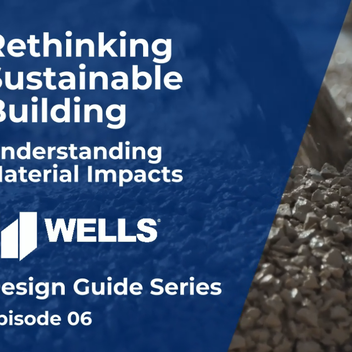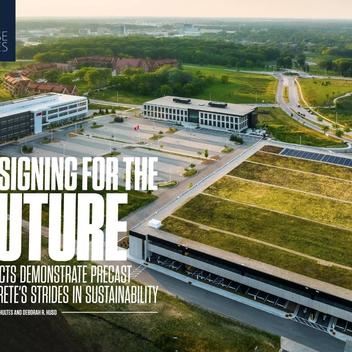
By Emily Lorenz, independent consultant and former editor-in-chief of PCI Journal
This article was originally published in PCI Ascent Fall 2022 issue.
Some days it’s hard to not feel overwhelmed by the reporting on climate change effects: more-intense floods, more and stronger hurricanes, heat domes, melting glaciers, wildfires. It is no wonder that the American Psychological Association now employs the term “climate anxiety.” It partly describes that feeling that although we are personally and professionally making choices that are more sustainable, it might not be enough to combat climate change.
But there is hope. Leading manufacturers across all sectors—including some precast concrete producers—are thoroughly evaluating material and energy use and actively trying to reduce their impacts. These manufacturers are conducting surveys and tracking materials, energy, and waste to create benchmarks and environmental product declarations. Precast concrete producers are also working with design teams to incorporate more sustainable and resilient features into our buildings. Most of my career in the sustainability field has focused on these areas: helping manufacturers assess and reduce their environmental impacts, and working on codes and standards to reduce the environmental impacts of materials and structures.
For many of us in the design and construction industry, our focus on sustainability has slowly changed from minimizing environmental impacts to realizing that we must design structures to resist climate change impacts so that occupants and communities can adapt and survive increasingly severe, frequent, and extreme weather events. Adopting current and “stretch” codes will help us achieve those goals.
One missing key to combating climate change is legislation to spur innovation related to non-fossil-fuel sources of energy, which will allow us to alter the trajectory of increasing greenhouse gas (GHG) concentrations. Buildings in the United States are responsible for a significant portion of the GHGs emitted into the atmosphere. Likewise, we know that 11% of GHG emissions come from the manufacturing of construction materials that go into infrastructure, flatwork, buildings, and other projects.
GHGs are largely a result of a significant portion of the energy used being generated by fossil-fuel sources. When fossil fuels are burned to create energy—to heat, cool, light, and power equipment in our buildings and manufacturing facilities—GHGs are emitted. And those GHGs are either attributed directly to the energy used in buildings or are embodied impacts in the materials used in construction.
Design professionals can reduce the amount of energy used and prioritize non-fossil-fuel energy use. However, without incentives to encourage clean energy supplied by a reliable power grid, this is unlikely to reduce GHG emissions on the scale required to reduce the impacts of climate change.
This summer, the U.S. Congress passed meaningful climate change legislation. Let’s hope it is the relief we need to keep us moving toward a more sustainable future, and away from GHG-emitting energy sources and climate anxiety.

About the Author
Emily Lorenz is an independent consultant in the areas of life cycle assessment, environmental product declarations, product category rules, green building, and sustainability, and is the former editor-in-chief of PCI Journal. Email: emilyblorenz@gmail.com



